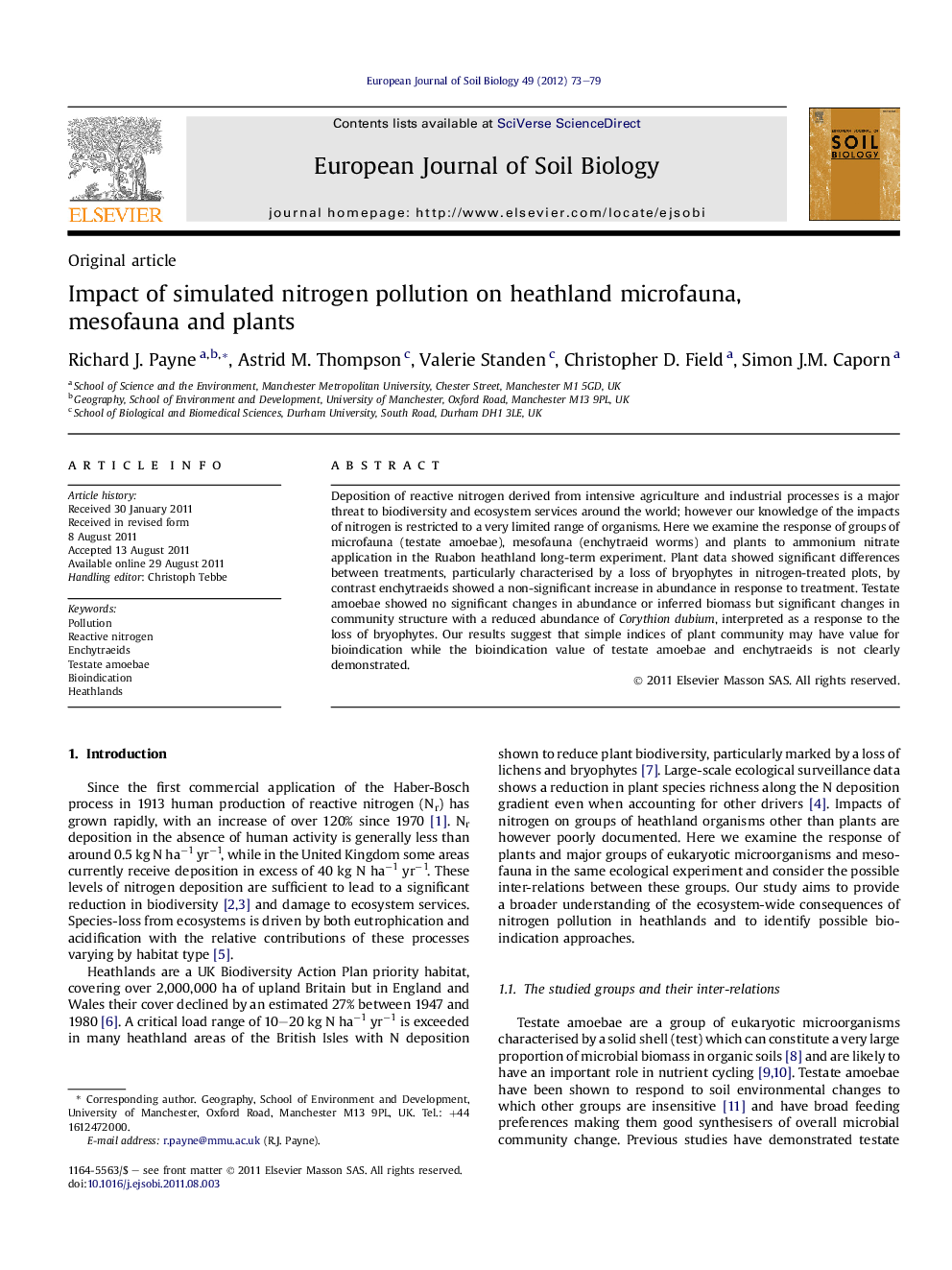| Article ID | Journal | Published Year | Pages | File Type |
|---|---|---|---|---|
| 4392085 | European Journal of Soil Biology | 2012 | 7 Pages |
Deposition of reactive nitrogen derived from intensive agriculture and industrial processes is a major threat to biodiversity and ecosystem services around the world; however our knowledge of the impacts of nitrogen is restricted to a very limited range of organisms. Here we examine the response of groups of microfauna (testate amoebae), mesofauna (enchytraeid worms) and plants to ammonium nitrate application in the Ruabon heathland long-term experiment. Plant data showed significant differences between treatments, particularly characterised by a loss of bryophytes in nitrogen-treated plots, by contrast enchytraeids showed a non-significant increase in abundance in response to treatment. Testate amoebae showed no significant changes in abundance or inferred biomass but significant changes in community structure with a reduced abundance of Corythion dubium, interpreted as a response to the loss of bryophytes. Our results suggest that simple indices of plant community may have value for bioindication while the bioindication value of testate amoebae and enchytraeids is not clearly demonstrated.
► Long-term N treatment has produced drastic changes in a heathland ecosystem. ► Heathland plants and testate amoebae but not enchytraeids are shown to be sensitive to N pollution. ► Plant community-based bioindicators may also reveal changes in the soil ecosystem.
